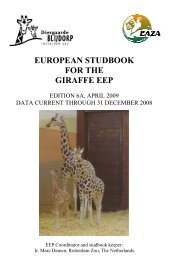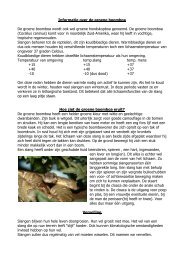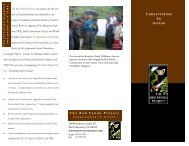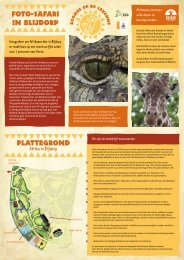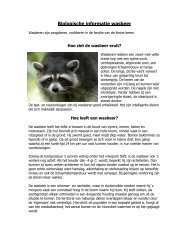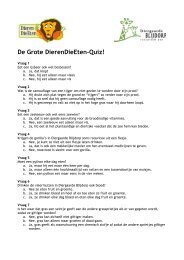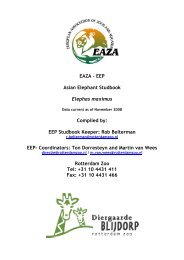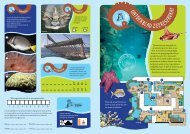Create successful ePaper yourself
Turn your PDF publications into a flip-book with our unique Google optimized e-Paper software.
<strong>EEP</strong> STUDBOOK CROWNED PIGEONS<br />
Lowland rainforest occurs along the entire coast of New Guinea, being broken in a few places<br />
by anthropogenic grassland or eucalypti savanna. However, at the moment large areas of<br />
tropical rainforest occur only in three regions:<br />
(1) The vast Fly Platform south of the Central Ranges, extending from about Etna Bay at the<br />
neck of the Vogelkop to Hall Sound on the SE peninsula, home of the Scheepmakers<br />
crowned <strong>pigeon</strong>s<br />
(2) In the west, the Vogelkop peninsula, where the common crowned <strong>pigeon</strong>s occurs, and<br />
(3) In the north, the watershed of the Mamberambo River and its tributaries and adjacent<br />
coastal plains, and the Sepik and Ramu basins. In this area the vicoria’s crowned <strong>pigeon</strong>s<br />
occur.<br />
These three lowland areas are isolated from eachother by two geographical barriers: (1) the<br />
Central Ranges, which separates the northern from the southern lowlands, consists of high<br />
mountains (3000-5000m) and are crossed by only a few passes at about 1200-2000m; thus the<br />
important zones of contact between northern and southern faunas are at the far eastern and<br />
western ends of the range, (2) the mountainous isthmus between the Vogelkop and the main<br />
body of the island. In the Pleistocene, there was also a major change in rainfall pattern due to<br />
reduced precipitation. Much of the tropical rainforest along the coast is replaced by savanna<br />
and sclerophyl vegetation. This left remnant pockets of rainforest only where the precipitation<br />
remained high (Pratt, 1981). Thus by the mountains and the reduced precipitation, three<br />
geographical regions into which many lowland birds segregate were separated by barriers<br />
defined by low rainfall and/or mountains. The populations were confined to regional refuges<br />
of humid forest, segregated from other areas by broad belts of inhospitable habitat during<br />
periods when rainfall was reduced (Beehler, et al., 1986). If the drier zones were in fact gaps,<br />
then the Fly, Vogelkop, Geelvink, and Sepik and Ramu rainforests would have become<br />
isolated tracts (Pratt, 1981). Thus speciation may have occurred in a typical geographic<br />
fashion, during dry and cool Pleistocene conditions, when ranges were more fragmented than<br />
they are today (Beehler, et al., 1986). When the climate changed again and the rainforests<br />
expanded in response to higher precipitation, many birds followed the forest out of the<br />
refuges. This range expansion continued until allopatric populations came into contact once<br />
again. This is said to be the case for crowned <strong>pigeon</strong>s: each species of crowned <strong>pigeon</strong>s<br />
occupies one of the main distributional centers for lowland birds. In the Fly Platform the<br />
scheepmakers crowned <strong>pigeon</strong> occurs the common crowned <strong>pigeon</strong> at the Vogelkop and the<br />
victoria’s crowned <strong>pigeon</strong> at Geelvink Bay. In the Siriwo River region of northwestern New<br />
Guinea Goura victoria and Goura cristata meet and hybridize (Goodwin, 1983). In the Sepik-<br />
Ramu area crowned <strong>pigeon</strong>s do not occur. (Pratt, 1981). There, they probably became extinct<br />
because of few <strong>number</strong>s or other ecological reasons, like food abundance or climate.<br />
Most of the islands, where crowned <strong>pigeon</strong>s occur, are co-called ‘land-bridge islands’:<br />
Waigeo (or Waigeu), Yapen, Salawati, Misool and Batanta. Land-bridge islands were in the<br />
past connected to the mainland (New Guinea), but since the sealevel has risen, they became<br />
isolated (Diamond, 1973). This development has taken place only recently.<br />
87



